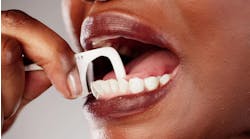Oral preventive assistants can be a good thing for dental practices
In April 2025, Arizona introduced the oral preventive assistant (OPA) role, a strategic move to enhance dental care accessibility, especially in underserved regions. This initiative mirrors the US Air Force's longstanding commitment to preventive dental care through its prophy tech program.
As a USAF-trained dental assistant, I was excited to learn that this role is transitioning into the civilian world. It in no way aims to eliminate the dental hygienist’s role but instead enhance access to patient care. OPAs will work collaboratively with hygienists. Here’s what this new position entails.
The military's blueprint: The Air Force oral hygiene course
At Joint Base San Antonio-Lackland, the Air Force's oral hygiene course stands as a testament to the importance of preventive dental care in maintaining mission readiness. This intensive program combines classroom instruction and hands-on patient care, during which students perform approximately 170 dental prophylaxes and 60 annual dental screenings.
Graduates return to their units to complete Phase II training under the supervision of experienced dental professionals to ensure they’re fully equipped to support the Air Force Dental Readiness and Assurance Program.
Arizona's civilian adaptation: The OPA role
Drawing inspiration from military efficiency, Arizona OPAs are trained dental assistants authorized to perform specific preventive procedures under direct supervision. Their duties include removing plaque and stains, taking periodontal readings, and performing supragingival scaling and polishing, the definition of D1110. To qualify, candidates must complete a board-approved 120-hour training course and hold certifications in CPR, coronal polishing, radiography, and either a national dental assisting certification or completion of an accredited program.
Some people are asking, "Why can dental assistants scale?"
Benefits to dental hygienists and practices
Dental hygienists
Collaborative support: OPAs can assist with preliminary procedures and documentation, helping reduce the workload of hygienists.
Focus on specialized care: With OPAs managing routine prophylaxes, hygienists can dedicate more time to specialized treatments and patient education.
Dental practices
Enhanced efficiency: OPAs can handle routine preventive procedures, allowing dentists and hygienists to focus on more complex periodontal procedures.
Improved access: By expanding the dental workforce, practices can accommodate more patients, particularly in areas with limited dental care availability. This can mean that those patients in need of periodontal therapy can be seen sooner because the hygienists’ schedules will not be filled with “healthy mouth” prophylaxes.
Pushback is inevitable, but this is a blend of civilian and military dental practices
Arizona's adoption of the OPA role reflects a broad trend of integrating military best practices into civilian health-care systems. By leveraging the structured training and efficiency demonstrated in programs like the Air Force's oral hygiene course, Arizona strives to enhance its dental care delivery to ensure residents receive timely and effective preventive services.
I understand the pushback from some members of the dental community; this can be expected when there’s what seems like a drastic shift in the role of what’s often considered “just an assistant.” I imagine it’s much like plastic surgeons who see dentists administering Botox and fillers, or dentists who see hygienists administering local anesthetics.
As has been shown, there’s room for all practitioners at different levels in their fields. I think OPA is a great opportunity for dental assistant career development, growth, and job satisfaction. We are all on the same team with the same goal in mind—safe and efficient patient care. Why not let those who aspire to reach new heights in their careers have the opportunity to do so? Those who are not interested need not apply.
For more information on becoming an oral preventive assistant, visit Arizona State Board of Dental Examiners' or the Board of Dental Examiners website in your state.





